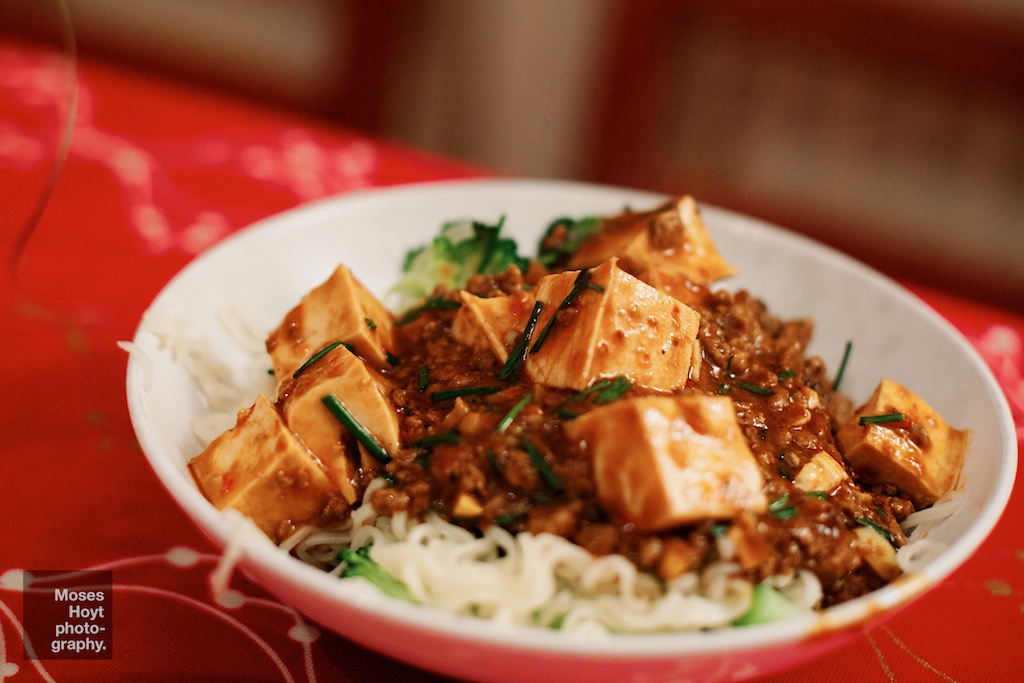So this is maybe a little bit of a different sort of subject to what I usually go for, but it’s something that’s interested me, and I always felt that it’s totally un/under-appreciated in British society.
Since being in Japan a year or so ago, I’ve come to appreciate these different sorts of spices and flavourings that are used frequently over there, but have largely been ignored here in the West. One in particular here is the szechuan/sichuan peppercorn (called sansh? in Japanese). I came across it primarily in two dishes while I was there, both Chinese inspired (or just plain Chinese) but largely interpreted and used in Japanese cuisine often now, Mápó dòufu/mÄbÅ dÅfu (see Wikipedia) and a particularly spicy ramen at a place I found in Kanda. In these two dishes, sansh? pepper was used to particular effect to enhance the sensory experience of the dish, providing a somewhat numbing and gradually building spiciness – something which I hadn’t really experienced before.
So turning to my favourite (and what I consider the definitive) book on food and food etymology, On Food and Cooking, I read this:
The Chinese spice known as Sichuan pepper and the Japanese sansh? both offer a strange and interesting version of pungency. They come from two small trees in the citrus family sometimes called “prickly ash.” Sichuan pepper trees are Zanthoxylum simulans or Z. bungeanum, and sansh? trees are Zanthoxylum piperitum. The spices are the small dried fruit rinds, which are aromatic with lemony citronellal and citronellol. The pungent compounds, the sanshools, are members of the same family as pipeline from black pepper and capsaicin from chills. But the sanshools aren’t simply pungent. They produce a strange, tingling, buzzing, numbing sensation that is something like the effect of carbonated drinks or of a mild electrical current (touching the terminals of a nine-volt battery to the tongue). Sanshools appear to act on several different nerve endings at once, induce sensitivity to touch and cold in nerves that are ordinarily nonsensitive, and so perhaps cause a kind of general neurological confusion.
Super interesting right? It’s a super weird little spice. While being called a pepper or a peppercorn, it’s not really, just dried (and then crushed) fruit rinds. So I came across this stuff as part of a mix in this ramen joint called Kikanbou in Kanda (lots of info on Ramen Adventures), a place where you get to choose the amount (both on scales out of 10) of regular spice and numbing spice (the aforementioned sansh?) in your bowl of ramen. It maybe comes across as a little gimmickish, but I assure you, it’s not. Both of those scales are pretty legit, and pretty spicy.
So when I got home from Japan in December of last year, the first thing that I wanted to do was to subject my family (who ordinarily are fans of hot peppers, hot sauce, and pretty much anything else hot – we grew habaneros, jalapeños, hungarian wax and serrano peppers in Scotland, and had a bottle of sriracha on the table at most meals) to the wonders of sansh? pepper. What better way to do this than with some homemade and awesome mÄbÅ dÅfu.
I used a combination of a couple recipes on the internet – I always find following just one recipe silly, especially when most of the recipes that I am going to read will be Western interpretations of the dish. Surely I should maximise my understanding of the methods, ingredients and techniques by reading around the recipe and going from there. Try it – it works pretty well. One video that did help (and in general is pretty good with Japanese cooking) was the Cooking with Dog mÄbÅ dÅfu recipe – worth a look for sure, especially with the unnecessariyness of the dog in the video. Getting some of the ingredients (the tough things to find were the Doubanjiang, the Tian Mian Jiang and the Sichuan Pepper) was a little challenging at first, but the local asian food store helped out. The result was pretty good, and not knowing how spicy it was going to be, everyone tucked in.
Everyone loved it, though did comment on the unique taste, which I believe to be from the sweet bean paste, and the interesting sensation on their tongue as the meal progressed. By the end, we pretty much felt exactly what was described in McGee – like a slightly burning or fizzing sensation on tongues, so much so that when drinking still water, it had the sensation of carbonated water. Just so bizarre! I’m not sure that by the end of the meal everyone felt content with their tongues on fire in a new way, but hey, that’s how it goes. Turns out that I had a lot of Sichuan pepper left at the end of the meal, and what better to do with it than put it in a regular pepper grinder and try it out with many more meals (potentially tricking more unknowing family members and guests in the process).
Closing notes. It’s an interesting spice. It smells very fruity, probably because of the citronellal/ol, and almost in the same way as gin. A kind of botanical/juniper fruitiness I guess. This led me to trying it in gin and tonics, with a slice of cucumber (in place of black pepper) to much success. It’s a little different, but if you have some adventurous guests, they’ll love it. It’s also fantastic with eggs, and especially morning omelettes, but then anything spicy is… All in all, I would highly suggest trying it out, and incorporating some Sichuan pepper into your diet, even just to add another dimension of taste and spice.

